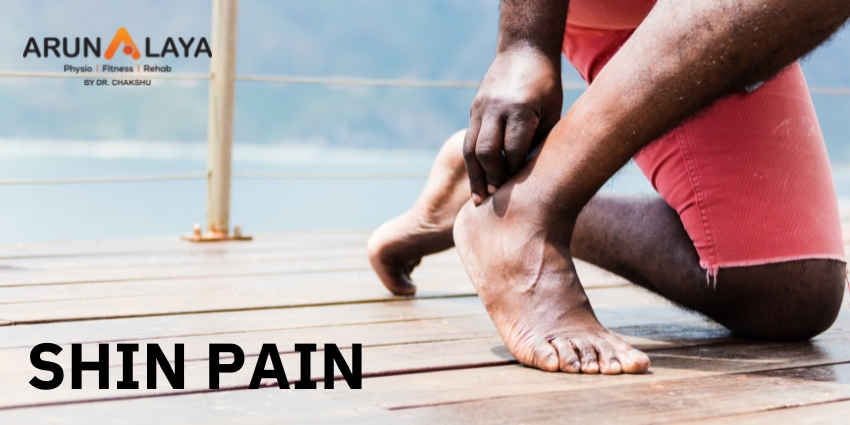SHIN PAIN
Shin pain is common exercise related injury refers pain along the inner edge of shin bone (tibia) or sometimes on front of lower leg. Physical activity such as running, jumping or any vigorous sports activity can bring on shin pain, in case if you are starting at fresh or after a long time gap.
There can be some of the factors which can correlate as shin pain such as Stress fracture of tibia, Periostitis, Contusion injury, Compartment syndrome and MTSS (Medial Tibial Stress Syndrome). What is more common in athletes or exercise beginners is MTSS, known as shin splints where due to stress loading on tissues develop inflammation of muscles, tendons and bone tissue along the medial border of tibia (inner edge of shin bone).
Occurence
Generally, shin splints develop by overworking of muscles and periosteum (outer most layer of bone) by repetitive activities or bio-mechanical faults or environmental factors (exercise surface). Sudden changes in duration, intensity, and frequency of physical exercise can lead to shin splints.
Other factors which can contribute to shin splints are:-
Flat feet or abnormal rigid arches can create abnormal stress on medial border of tibia (inner edge).
Pain can be sharp, throbbing or dull.
Pain occurs during and after exercise.
Pain aggravates by touching on sore area or tender area.
If you ask, Should I take any medicine or go for radiological tests?
Oh No! Taking medicines such as anti-inflammatory and pain killers will not sort out your injury. Pills only kill the pain for some time, it’s momentarily relief and will not resolve your injury.
Secondly if you choose to do X-Ray, MRI etc., you will be wasting your time and money. Instead if you won’t find anything in radiological findings you can increase your anxiety level (beware of that).
Seek expert advice for the best treatment and go ahead as per their advice.
What will Sports physio do?
Assessment is a vital part for any injury or condition to be diagnosed. Sports physio will discuss about your pain, history and symptoms.
Shall do keen observation on your pain area
Shall palpate the tissues
Shall examine your movements
Do physical skill tests to evaluate and making correct diagnosis
Most importantly explaining to you the whole condition in the easiest ways that what it is.
How it occurred?
Why it happened?
What is the cure?
We the “Pain free zone” is a hub of specialized sports physio or expert in sports injuries. We will assess, diagnose and will treat you.
We have
-dynamic approach and multidimensional knowledge base which is patient centered
-clinical reasoning process that is embedded in problem solving approach
-central focus on movement assessment
-consistent virtues in caring and commitments towards patient.
“To have the effective treatment there is a need of correct assessment and diagnosis”
Coming to the topic again stress fracture, tendinitis, chronic exertional compartment syndrome can be detected by physical tests, movements and palpatory skills.
And we “PFZ” are highly expert in these.
Can I do something at home to relieve my pain before coming to you?
Yeah why not?
Do ice- use cold packs for 15-20 mins several times a day , but be careful about time duration
Compression – wear elastic compressive bandage over pain area
Proper shoes – wear good cushioning shoes to reduce stress on shin bone while walking.
Avoid running on hard surface or either stop vigorous activity for some days.
If these can relieve my pain what all different you will do?
You can have relief in pain by these but in future this pain can come again and can be more severe.
Why you wear sweaters and blazers in winters! Well you are feeling cold or last time you suffered from chills and fever.
Above mentioned are just home advices, treatment and solving your problem is way far.
*If your pain is due to bio-mechanical fault such as over pronation, flat feet so ice and home remedies won’t work for you at all. That needs to be corrected
Pain free zone apply most advanced techniques in physiotherapy management
Modalities
Dry needling
IASTM- Instrument Assisted Soft Tissue Mobilization
Therapeutic Taping
Manual Therapy
Specific Exercise Program
Return to Activities

